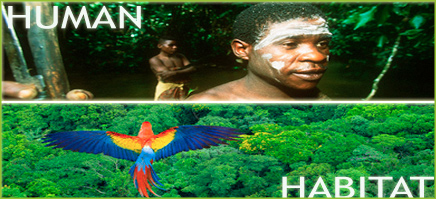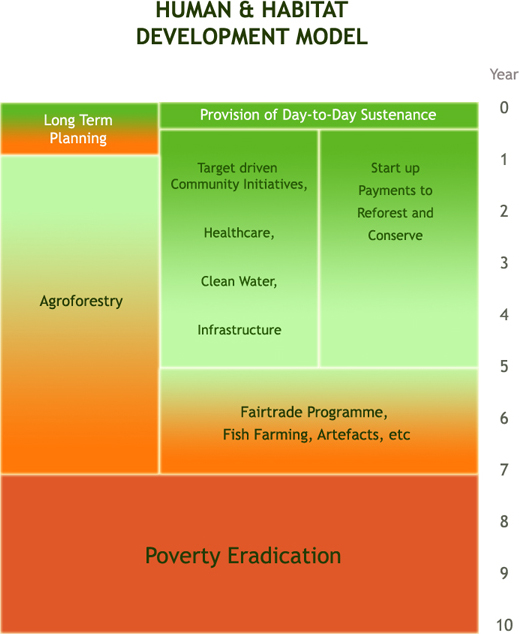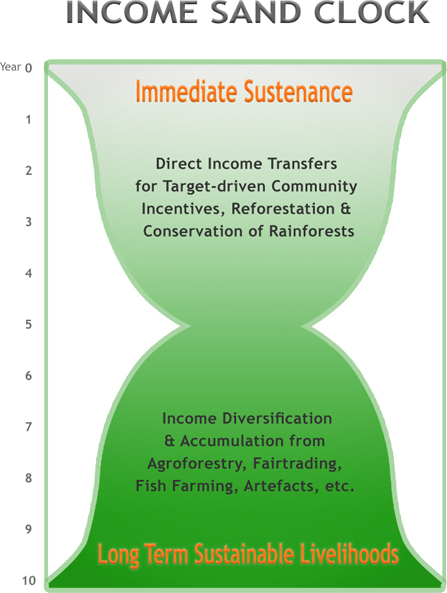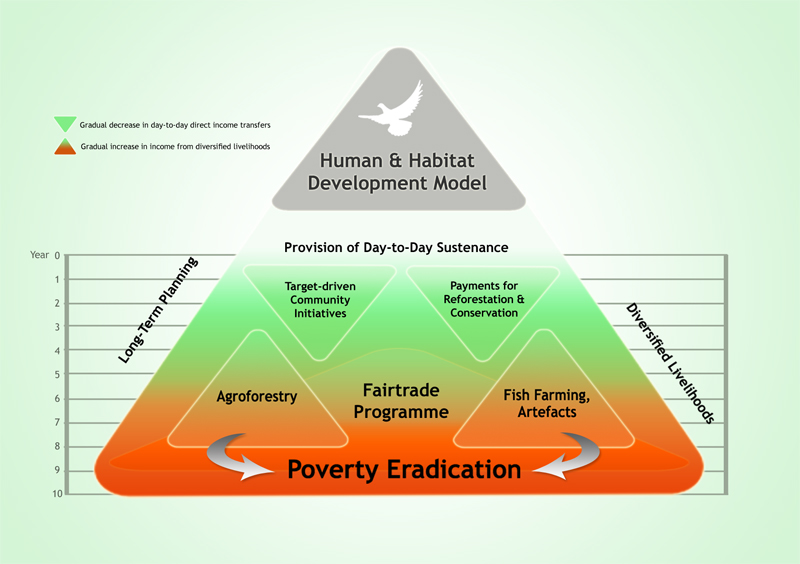Human & Habitat (H&H) Development Model
The Human & Habitat (H&H) Development Model is one of the most innovative approach to target driven activities within the charitable sector. This pioneering model addresses the two most urgent challenges facing humankind today: global warming and extreme poverty. |
 |
This model recognizes that sustainable economic and social development is possible if and only if the environment and the ecosystem are systematically considered in the development process. It also promotes meaningful participation of poor people, by working in partnership with the local community, civil society groups, corporations and the government.
Tolerance International’s H&H Development Model acknowledges the two-way effect of climate change and poverty. Poor countries are extremely vulnerable to climate change that disrupt their lives and livelihoods. The H&H Model focuses on regeneration and conservation of the rainforests which are home to 1 billion people living in extreme poverty, and which are the biggest carbon sink on the planet after the oceans.

Fig 1. This diagram shows the process towards poverty eradication in a time-bound box. At year 0, immediate day-to-day sustenance will be provided, along with the initiation of long-term planning process. Target-driven community incentives, and reforestation and conservation efforts, which will begin within the first year, will continue with agroforestry and fairtrading schemes, which will roll in year 3-7. Year 7 and onwards, communities will be able to generate income through diversified and sustainable livelihoods.

Fig 2. This diagram illustrates how gradual decrease in direct income transfers will be compensated by gradual increase in income through diversified means of employment.
Fig 3. While providing knowledge and tools to the communities, we assist them with two strands of funding. As shown in the diagram, one method is the immediate provision of day-to-day sustenance. During the reforestation period (3-5 years) we provide income based on the number of trees planted. On reaching identified annual targets, an important communal incentive is provided as a bonus. These will be essential infrastructural solutions like provision of clean water, energy efficient stoves, solar power electricity, education, health care, etc. The funds for these incentives are covered through the Green VIP scheme. The agroforestry programme will start to pay dividends after this period. In time it will develop in to a fair-trade schemes bringing in greater dividend. In the long run, decrease in direct payments will be compensated by increase in income from diversified livelihoods, and sustainable means of employment. This should lead to long term eradication of extreme poverty in your 'twinned' community.

